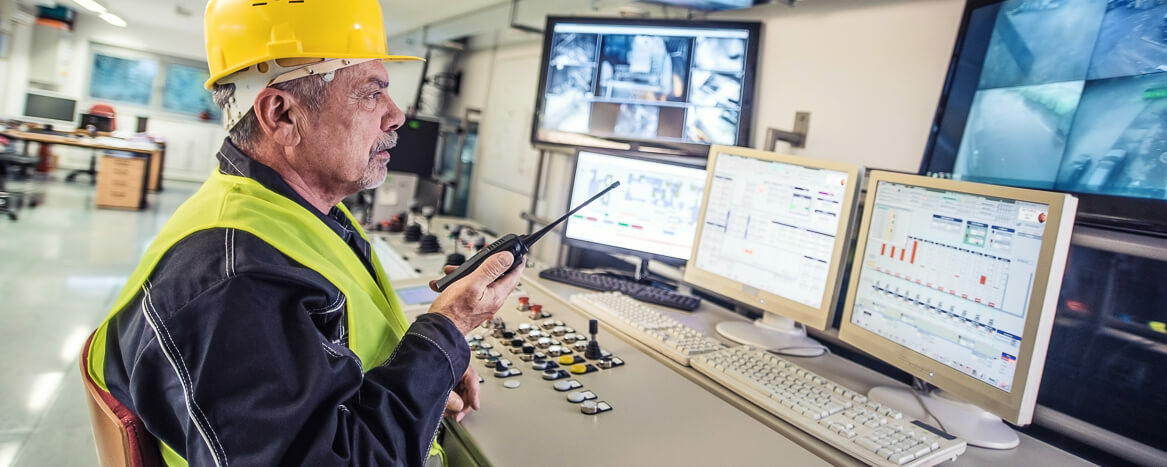In the event of a disaster, the landline and mobile network may collapse immediately. However, if you are dependent on communication — especially in emergencies — you should provide a satellite phone ready to use.
Mobile devices
We recommend easy-to-use and intuitive devices such as Iridium 9555, Inmarsat IsatPhone 2 or Thuraya XT-PRO.



Iridium, Inmarsat and Thuraya are both the device manufacturers and the satellite network operators. Unlike mobile telephony, neither SIM cards nor devices can be operated in third-party networks. An Iridium satellite phone will only work with an Iridium SIM card and only sees the Iridium satellites. The same conditions apply to Inmarsat and Thuraya.
Solutions that turn your smartphone into a satellite phone we expressly do not recommend for emergency communication. In an emergency, there could be difficulties in pairing the satellite phone with the smartphone or the appropriate app on the smartphone may no longer be up-to-date.
When deciding on a satellite network, you should consider who you want or need to communicate with. Unfortunately, it is very expensive to make calls from one satellite network to another. Of course, when it comes to human lives, money should be no object. However if you can arrange it, you should avoid making calls between different satellite networks.
Once you have purchased you satellite equipment, don’t leave it in the cupboard all the time waiting for an emergency. In worst case they probably won’t work. In addition to technical maintenance such as battery care and firmware updates, the emergency personal should also be familiar with its operation.
For all emergency communication devices, we only recommend postpaid contract cards and no prepaid solutions that shall be topped up when needed (i.e. in an emergency). Even during a small-scale disaster like the one in the German Ahr Valley in July 2021, we had a lot of calls to reactivate and top up cards as quickly as possible. If a disaster occurs where we are only partially available, that is not a solution. Similarly, in the event of a large-scale disaster, we would not be able to serve you in time due to large volume of requests.
Conclusion: We should not be part of your rescue processes. An emergency device should always be ready for use. You should ensure this by:
- Frequently test calls
Reason is either you know whether the device actually works (including keypad, microphone, speaker), and you stay familiar with operation und features. - Battery care
The batteries inserted in phones as well as any spare batteries should be charged regularly and shluld be at least partially discharged. This can be done either manually, or by external battery chargers with charge management as additional accessories. - Firmware updates
It is really essential to keep the device’s firmware up to date. Please sign up for our Update-Service for your devices. So you will be informed automatically when a new firmware is released and you can update your device shortly.
Devices for the operations center
Unlike your smartphone, satellite phones need a visual link to the satellite. In buildings this only works with an external antenna. It is important to note the satellite systems differences: Iridium with earth-orbiting satellites (LEO) requires an antenna location at the highest point of the building with a maximum unobstructed view to the sky. Inmarsat and Thuraya “only” require a clear view to the given geostationary (fixed located) satellite, so the antenna can also be mounted on the wall of the building if the satellite can be seen from this position.
You have two hardware options:
Mobile phone and docking station
You use the same telephone that your mobile emergency services carry — combined with a docking station. The docking station, also called docker or dock for short, is connected to the external antenna via special high-frequency cables. The models provide an analogue RJ-11 interface for integration in analogue telephone systems. Ideally, the docker has an uninterruptible power supply (UPS). If necessary, the phone can be taken out of the docker and used on the move.
Base station
A base station consists (only) of a terminal and antenna with corresponding cable. There is no interface contact as with mobile phones and dockers. With the exception of the Thuraya MarineStar, all models have an internal SIP server for the connection to or integration of VoIP telephones and/or digital telephone systems. The Thales (Iridium Certus Service) and Explorer (Inmarsat BGAN Service) terminals have a fixed SIP IP address that cannot be changed; with the LT series, SIP can be set flexible as a DHCP server, client or as a fixed, freely selectable IP address.
Base station with one voice line: These devices are operated with the same service and therefore the same SIM card as the mobile phones (exception Explorer 540). Please note the maximum cable lengths and satellite system requirements for the antenna location.



Base station with 2–3 voice lines and internet: Alternatively, there is the Iridium Certus service, which offers 2 or even 3 simultaneous voice lines and data transfers of up to 700 kbps. You’ll need an external antenna for those devices either.



Devices for vehicles
The combination of docking station plus satellite telephone or systems with data transmission and telephony are also available for emergency communications in vehicles. For example, with the Inmarsat Explorer 323 or the Iridium MissionLink 200 and 700, communication is also possible while driving.





